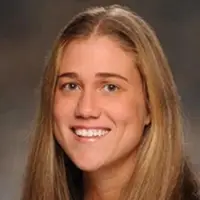Project 2: Improving Jury Representation in St. Louis County, MN
Objective
Investigate the representation on juries in St. Louis County, Minnesota, and to offer recommendations for improvements to be shared with stakeholders.
Approach
Review data from the Minnesota Administrative Office of the Courts and conduct focus groups comprised of prosecutors, defense attorneys, judges, community members, and Minnesota court administrators.
Impact
Develop recommendations for addressing representation of juries in St. Louis County to share with attorneys, judges, court administrators, elected officials, and other stakeholders.
To learn more about the Justice for All grant, read Part 1 in this series. Read Part 3 of the series here.
Addressing the Representation of Populations on Juries
Critical to guaranteeing a fair trial is ensuring that juries are representative of their communities. As is the case in many communities, in St. Louis County, Minnesota, there are concerns that the jury pools are not representative enough and, thus, do not reflect the general population or represent a true jury of an individual’s peers. RTI partnered with the NACDL, the Association for Prosecuting Attorneys, and the National Center for State Courts to support a team of St. Louis County officials in addressing the populations who serve on juries.
Reports obtained from the Minnesota Administrative Office of the Courts indicated that, in 2019, people who are Black, Native American, Asian, and/or Hispanic, made up a small portion of jury pool data compared to the overall population. Not everyone who completed jury service, however, reported their demographic data (18.7% did not). Undeliverable summonses, nonresponses, failures to appear, disqualifications, and excusal rates also contributed.
Insights from Focus Groups on Jury Representation
RTI conducted interviews and focus groups with constituencies in St. Louis County, including current and former prosecutors, public defenders, and judges; community members; and court administrators. Questions centered around perceptions of jury representation, knowledge of the jury selection process, and factors that reduce summons response rates and strategies to improve them.
Interview and focus group data revealed a lack of awareness of the jury selection process and indicated that representation may be the result of who is initially summoned rather than who is ultimately selected for jury service. Court administrators noted that not updating contact information and failing to register to vote contribute to the problem.
Challenges with Effective Jury Service
Respondents consistently mentioned the following reasons why those summoned might not respond or appear on their service date:
- Cannot be excused from work/some employers refuse compensation during jury service
- Unavailable or cost-prohibitive childcare
- Per diem for jury service is too low
- Lack of transportation
- Privacy concerns
- Lack of trust in the legal system
Recommendations for Improving Jury Representation
Focus group members suggested a number of improvements to bolster jury representation. These included:
- Increase transparency around how jury selection lists are compiled
- Provide summons notice well in advance of expected service date
- Email notifications to potential jurors and allow them to respond to notifications
- Improve contact update availability (e.g., provide kiosks in public spaces)
- Provide public education about jury service
- Improve compensation for jury service
- Ensure employers compensate properly for days off for jury service (and create mechanism to report employers who refuse compensation)
- Provide transportation or transportation reimbursement
- Provide childcare or childcare reimbursement
State-Level Recommendations
State-level policy changes might be in order for making juries more representative at the county level. The following examples from other states could guide policy decisions in Minnesota:
- Use as many source lists as necessary to achieve better representation
- Expand eligibility to include permanent resident noncitizens
- Provide translation services
- Work with a national change-of-address provider to ensure up-to-date contact information is available and provide opportunities to update address more frequently
- Send reminder postcards
- Increase juror pay
- Decrease maximum length of service
- Revise the voir dire process and limit the permissible number of objections attorneys can make without a compelling reason for striking a juror
- Collect data on the demographics for potential jurors at all stages of the process
- Engage in community-focused education and outreach
- Bureau of Justice Assistance
- National Association of Criminal Defense Lawyers
- Association of Prosecuting Attorneys
- National Center for State Courts





